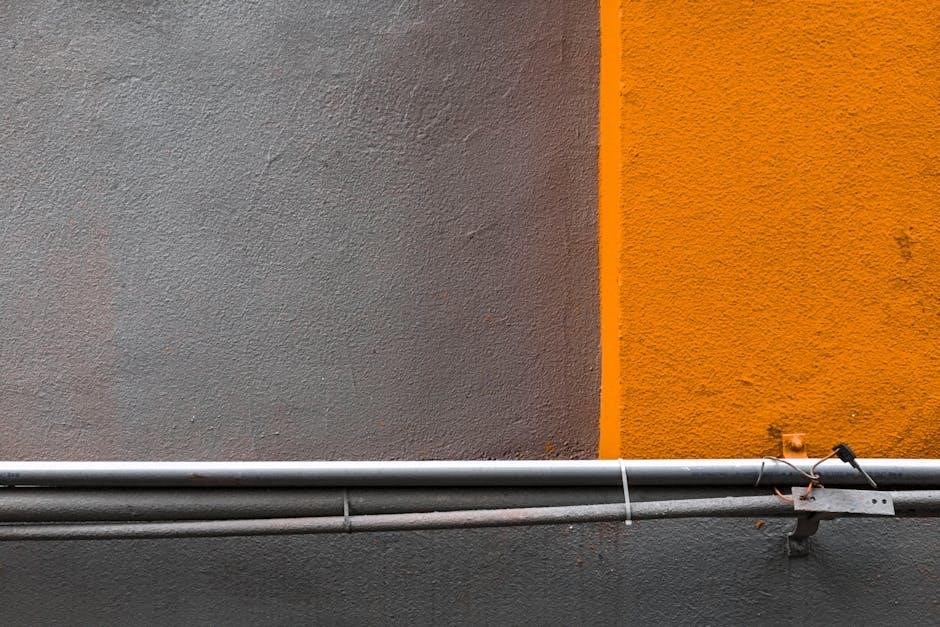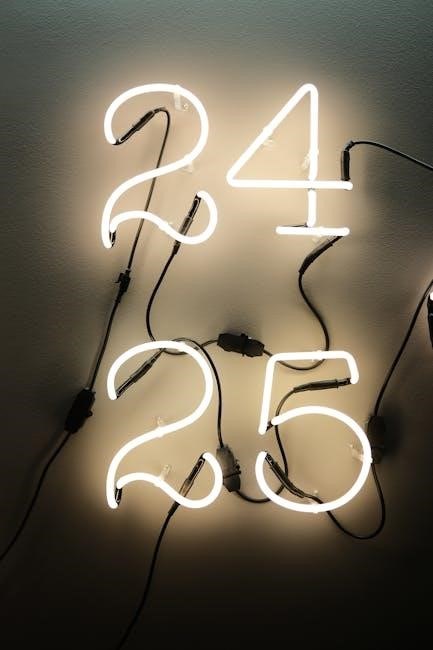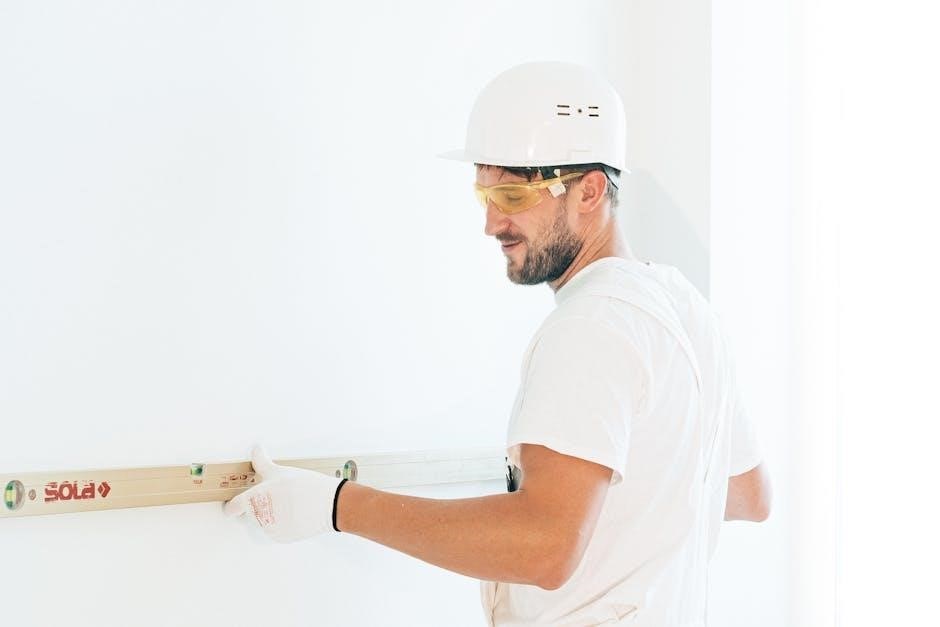Welcome to your comprehensive guide to installing a Belgard retaining wall! This guide provides step-by-step instructions and essential tips for creating a durable and aesthetically pleasing retaining wall using Belgard products. Whether you’re a seasoned contractor or a DIY enthusiast‚ this resource will help you successfully complete your project.

Belgard retaining walls offer a versatile and aesthetically pleasing solution for managing landscapes and preventing soil erosion. Known for their durability and ease of installation‚ Belgard systems are a popular choice for both residential and commercial projects. Belgard has defined itself among brick and concrete paver manufacturers by offering distinct pavers for stone hardscapes‚ retaining walls‚ and more. Their modular block systems‚ like the Tandem Wall‚ allow for both curved and straight wall designs‚ providing flexibility in design and application.
Belgard’s retaining wall blocks are engineered for strength and longevity‚ ensuring that your wall will withstand the test of time. In addition‚ Belgard offers a variety of styles and colors‚ ensuring that your retaining wall complements your existing landscaping. The Tandem Wall modular block system is a simple‚ quick‚ and versatile way to install a retaining wall.
One key advantage of Belgard systems is their ease of installation. Many of their retaining wall blocks feature rear-lip locators‚ which ensure accurate and fast installation. Some of Belgard’s retaining wall blocks are lighter than traditional retaining wall blocks‚ reducing handling time‚ increasing ease of installation and improving shipping efficiencies. This guide will walk you through the entire installation process‚ from planning and preparation to the final touches‚ ensuring a successful and visually appealing retaining wall that enhances your outdoor space.
Planning Your Belgard Retaining Wall Project
Careful planning is crucial for a successful Belgard retaining wall project. Before you begin‚ assess the site and determine the wall’s purpose‚ height‚ and length. Consider local building codes and regulations‚ which may require permits or engineering approval‚ especially for taller walls. A retaining wall licensor and manufacturer can offer helpful insights. It is refreshing to see a retaining wall installed correctly with geogrid reinforcement. Engineering may be required for your installation.
Next‚ select the appropriate Belgard retaining wall block that complements your landscape and meets your structural needs. Belgard offers a variety of styles and colors to choose from. Determine the amount of materials needed‚ including blocks‚ base material‚ drainage aggregate‚ and geogrid if required.
Develop a detailed design plan‚ including the wall’s layout‚ drainage system‚ and any special features like curves or steps. Consider the site’s soil conditions and drainage patterns to ensure proper water management. Proper drainage is essential to prevent hydrostatic pressure from building up behind the wall. Also‚ a drain pile adjacent to the back of the wall is very important‚ and drainpipe outlets should be spaced no more than every 50 feet and at low points of the wall. A well-thought-out plan will save you time and money‚ and ensure a structurally sound and aesthetically pleasing Belgard retaining wall.
Materials and Tools Needed
Gathering the right materials and tools is essential before starting your Belgard retaining wall project. You’ll need Belgard retaining wall blocks in your chosen style and color‚ ensuring you have enough to complete the entire wall‚ including any caps. Calculate the quantity based on your wall’s dimensions‚ consulting Belgard’s resources for estimating.
For the base‚ acquire a suitable base material such as crushed gravel or compacted aggregate. The amount will depend on the depth and width of your base‚ typically extending beyond the wall’s footprint. You will also need drainage aggregate‚ like gravel‚ to promote proper water flow behind the wall. Geogrid‚ a reinforcing mesh‚ may be necessary for taller walls or unstable soil conditions.
Essential tools include a shovel‚ level‚ tamper‚ measuring tape‚ string line‚ and safety glasses. A circular saw with a masonry blade is useful for cutting blocks. A wheelbarrow or other material-handling equipment will help transport blocks and aggregates. A rubber mallet can be used to gently set the blocks. A compactor is necessary for compacting the base. Ensure you have all the necessary safety equipment‚ including gloves and appropriate footwear‚ to protect yourself during installation. Having all the materials and tools readily available will ensure a smooth and efficient construction process.
Excavation and Base Preparation
Proper excavation and base preparation are critical for a stable and long-lasting Belgard retaining wall. Begin by marking the area where the wall will be built‚ ensuring you consider any necessary setbacks or building codes. Excavate the soil to the required depth‚ typically 6 inches plus the height of the first block course. The excavated area should extend beyond the wall’s planned footprint to accommodate the base material.
Compact the exposed soil using a plate compactor to create a solid foundation. Next‚ add a layer of base material‚ such as crushed gravel or compacted aggregate‚ to the excavated area. The thickness of the base layer will depend on soil conditions and wall height‚ but it should be at least 6 inches thick. Use a level to ensure the base is even and consistent across the entire area.
Compact the base material thoroughly with the plate compactor‚ making multiple passes to achieve maximum compaction. This step is crucial for preventing settling and ensuring the wall’s stability. Use a string line and level to verify that the base is perfectly level‚ as this will directly affect the alignment of the entire wall. A well-prepared base is essential for a successful Belgard retaining wall installation‚ providing a solid and stable foundation for the blocks.
Laying the First Course of Blocks
Laying the first course of blocks is a pivotal step in constructing a Belgard retaining wall‚ as it establishes the foundation for the entire structure. Begin by selecting the largest‚ most uniform blocks for this initial layer‚ as any inconsistencies here can propagate through subsequent courses. Position the first block at the lowest elevation of the wall‚ working along the prepared base.
Ensure each block is level both front to back and side to side using a level. If necessary‚ use shims made from geogrid or small stones to achieve perfect levelness. The back edge of the block should align with a string line to maintain consistent wall alignment. For multi-piece systems‚ prioritize using larger blocks on the base course.
As you lay each block‚ check its alignment with the adjacent blocks‚ ensuring a tight and consistent fit. Use a rubber mallet to gently tap blocks into place‚ avoiding damage to the block surfaces. Continuously monitor the level and alignment of each block as you progress‚ making adjustments as needed. This meticulous approach to laying the first course ensures a solid‚ level‚ and properly aligned foundation for your Belgard retaining wall.
Ensuring Proper Wall Alignment
Maintaining proper wall alignment is crucial for the structural integrity and aesthetic appeal of your Belgard retaining wall. To achieve this‚ use a string line along the back edge of the blocks as a constant reference point. This string line should be taut and secured at both ends‚ ensuring it remains straight throughout the installation process. Regularly check the alignment of each block against the string line‚ making adjustments as needed to keep the wall on course.
For curved walls‚ use a flexible measuring tape to mark the desired curve on the base. Then‚ carefully lay the blocks along the marked curve‚ ensuring a smooth and consistent arc. Small adjustments to the block placement may be necessary to maintain the desired curve.
In addition to the string line‚ use a level to check the vertical alignment of the wall. As you build each course‚ ensure the blocks are plumb‚ meaning they are perfectly vertical. Any deviation from plumb can lead to instability and an unsightly appearance. By consistently monitoring and adjusting the alignment of each block‚ you can ensure your Belgard retaining wall is both structurally sound and visually appealing.
Backfilling and Drainage

Proper backfilling and drainage are essential for the longevity and stability of your Belgard retaining wall. Backfilling involves filling the space behind the wall with granular material‚ which helps to distribute the load and prevent soil pressure from damaging the structure. Use a well-draining material such as gravel or crushed stone for backfilling‚ ensuring it is compacted in layers to prevent settling.
Effective drainage is equally important to prevent water buildup behind the wall‚ which can lead to hydrostatic pressure and eventual failure. Install a perforated drain pipe at the base of the wall‚ behind the first course of blocks. This pipe should be surrounded by gravel to facilitate water flow. The drain pipe should outlet to a location where water can be safely discharged away from the wall.
In addition to the drain pipe‚ consider using a geotextile fabric between the backfill material and the native soil. This fabric acts as a filter‚ preventing soil particles from clogging the drainage system. By implementing these backfilling and drainage techniques‚ you can ensure your Belgard retaining wall remains strong and stable for years to come. Remember to consult local building codes and regulations for specific requirements in your area.
Using Geogrid for Reinforcement
For retaining walls exceeding a certain height or those supporting significant loads‚ geogrid reinforcement is crucial to ensure stability and prevent failure. Geogrid is a synthetic material used to reinforce the soil mass behind the wall‚ creating a composite structure that is stronger and more resistant to deformation. The geogrid is installed in layers‚ extending horizontally into the backfill and anchored between courses of Belgard blocks.
The length and spacing of the geogrid layers will depend on the height of the wall‚ soil conditions‚ and anticipated loads. Consult with a qualified engineer to determine the appropriate geogrid specifications for your project. When installing the geogrid‚ ensure it is properly tensioned and free of wrinkles or folds. Overlap the geogrid layers according to the manufacturer’s recommendations to provide continuous reinforcement.
Backfill material should be carefully compacted around the geogrid to ensure good contact and maximize its effectiveness. By incorporating geogrid reinforcement into your Belgard retaining wall‚ you can create a robust and long-lasting structure that can withstand the forces of nature and the test of time. This reinforcement technique is particularly important for taller walls or those located in areas with unstable soil conditions. Always adhere to engineering guidelines for optimal results.
Capping the Retaining Wall
Capping your Belgard retaining wall is the final step in the installation process and adds both aesthetic appeal and structural integrity. Caps protect the top course of blocks from the elements‚ preventing water infiltration and erosion. They also provide a finished look‚ enhancing the overall appearance of the wall. Select caps that complement the style and color of your Belgard blocks for a cohesive design.
Before installing the caps‚ ensure the top course of blocks is level and clean. Apply a bead of masonry adhesive to the top of each block to secure the caps in place. Carefully position the caps‚ ensuring they are aligned and evenly spaced. Use a rubber mallet to gently tap the caps into place‚ creating a tight bond with the adhesive. Remove any excess adhesive with a damp cloth.
For a more secure and permanent installation‚ consider using a construction adhesive specifically designed for concrete products. Follow the manufacturer’s instructions for application and curing time. Inspect the capped wall for any gaps or misalignments and make necessary adjustments. The capping should overhang the wall slightly to direct water away from the wall face. Proper capping not only enhances the look but also protects the wall.
Belgard Retaining Wall Maintenance
Maintaining your Belgard retaining wall is crucial for its longevity and aesthetic appeal. Regular inspections and preventative measures can help avoid costly repairs and ensure the wall continues to function properly for years to come. One of the most important aspects of maintenance is ensuring proper drainage. Check the drainage system behind the wall regularly to ensure it is free of debris and functioning as intended.
Remove any accumulated leaves‚ soil‚ or other materials that may clog the drainage pipes or prevent water from flowing freely. Inspect the wall surface for any signs of cracking‚ bulging‚ or displacement. Address any minor issues promptly to prevent them from escalating into more significant problems. If you notice any significant structural issues‚ consult a qualified engineer or contractor for professional assessment and repair.
Clean the wall surface periodically to remove dirt‚ algae‚ or other stains. Use a mild detergent and water solution‚ along with a soft brush or sponge‚ to gently scrub the wall. Avoid using harsh chemicals or abrasive cleaners‚ as these can damage the surface of the Belgard blocks. Consider applying a sealant to the wall to protect it from moisture and UV damage. A well-maintained Belgard retaining wall will provide beauty and function.

Troubleshooting Common Issues

Even with careful planning and execution‚ some common issues can arise during or after the installation of a Belgard retaining wall. Addressing these problems promptly and effectively is essential for ensuring the wall’s structural integrity and long-term performance. One frequent issue is poor drainage‚ leading to water buildup behind the wall. Symptoms include bulging‚ leaning‚ or efflorescence (white salt deposits) on the wall’s surface. To resolve this‚ inspect and clear any blockages in the drainage system.
Another potential problem is wall misalignment or settling. This can occur due to inadequate base preparation‚ improper compaction‚ or unstable soil conditions. If you notice any significant deviations from the intended wall alignment‚ it may be necessary to disassemble the affected section and rebuild it with proper base preparation and geogrid reinforcement.
Block damage is another common issue. Cracks or chips can compromise the wall’s aesthetics and structural integrity. Minor damage can be repaired with patching compounds designed for concrete or masonry. If the damage is severe‚ the affected blocks should be replaced. Remember to always consult Belgard’s technical resources for specific product information and best practices for troubleshooting.